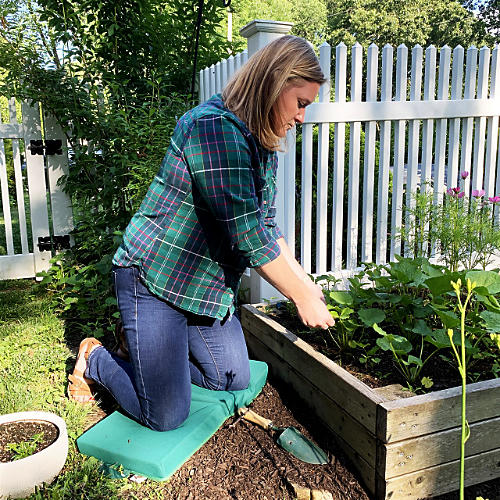
Ferry-Morse — one of the largest U.S. gardening brands — wants to set home gardeners up for success by highlighting the top five benefits of growing your own fruits and vegetables.
1. Freshness that can't be beat
Produce can't get fresher than what you grow and pick in your own backyard! Grocery store produce is chosen for its hardiness because it has to endure long journeys and handling before it reaches the store, where it may sit on display for days. On the other hand, when you grow your own fruits, vegetables and herbs, you control the harvest, so you can pick them at the peak ripeness and enjoy that fresh-off-the-vine taste.
2. Nutritious and delicious
Homegrown fruits and vegetables are also more nutritious than their store-bought counterparts. That's because crops begin to deteriorate as soon as they're picked. The farther it needs to travel, the more nutritional content is lost. At home, you can harvest your fresh ingredients as needed, ensuring your meal is made with the crispest and most nutritious produce possible.
3. Boosted taste and flavor
If you did a side-by-side taste test of a homegrown tomato compared to a store-bought one, chances are you'll notice the one from your backyard tastes better and is more flavorful. You'll enjoy a bolder flavor when fruit and vegetables are allowed to fully ripen on the vine. Homegrown produce allows you to experience a crop's true essence and provides a culinary experience that is sure to delight your senses.
4. A feast that won't empty your wallet
By growing your own, you'll save quite a bit of money. While there are initial expenses when setting up your garden for the first time, according to Better Homes & Gardens, the average home garden yields $677 worth of produce. Once you set up a garden, you'll have the necessary tools to nurture it season after season, creating a self-sustaining food cycle.
Making the initial investment in live plants and seeds will benefit you in the long run, as you won’t have to spend your dollars on store-bought produce that can rise in cost throughout the seasons. To get started, find a reputable brand like Ferry-Morse that delivers live baby Plantlings directly from their nursery to your door.
For first-time gardeners who want to add striking fall colors to their outdoor spaces, check out their Flamingo Pink Mums or Flamma Orange Celosia, available in 2-pack, 4-inch potted plants. If you want to keep incorporating fresh veggies into your homecooked meals post-summer, try their cold hardy vegetable Plantlings, including Cheddar Cauliflower and Ruby Perfection Cabbage. With over 40 Plantlings varieties of annuals, perennials, vegetables, and herbs to choose from, there’s something to meet each gardener’s unique taste and lifestyle preferences.
5. Connect with nature and reap the rewards
Gardening is a fantastic stress reliever that allows you to connect with nature and discover the joy of maintaining your own little patch of Eden. You can escape from the hustle and bustle of daily life, get your hands dirty and watch your plants grow into robust crops. Take in the soothing sights, sounds and scents of your home garden and reap the benefits to your well-being.
Planting and nurturing a garden is easier than you think and offers so many benefits to your palate, wallet and well-being. So grab your gardening gloves and spade and start your journey to a rewarding and nurturing harvest.
Try a homegrown meal for yourself
There’s no better way to welcome the crisp air and colorful leaves of fall than with a comforting bowl of homemade butternut squash soup. Earthy sage and rich browned butter infuse freshly harvested butternut squash in this easy-to-make dish, creating a symphony of fall flavors.
Start by melting 2 tablespoons of butter with 2 tablespoons of olive oil in a large pot over medium-low heat. Add onion and garlic, season with salt and pepper, and cook for about 8 minutes to soften, but not brown. Stir in apples and butternut squash and cook until they begin to soften, about 10 minutes. Stir occasionally to cook evenly.
Once the apples and butternut squash have softened, pour in chicken stock, bring to a boil, and reduce to a simmer. Season with salt and pepper; cover and cook for about 45 minutes, or until the squash is very tender. Use an immersion blender or pour the soup into a blender, working in batches if necessary, and blend until smooth. Return to the pot and stir in heavy cream.
While keeping your blended mixture warm, melt a stick of butter in a medium skillet over medium heat. Add sage leaves and pan fry for about 30 seconds or until crispy. Drain the sage leaves on a paper towel-lined plate and sprinkle with salt. Continue to cook the butter until browned and nutty, stirring to avoid burning. Transfer to a bowl after 1 to 2 minutes of cooking.
Once your soup is ready to serve, drizzle with browned butter and sprinkle with optional salted seeds and a few fried sage leaves and enjoy!















